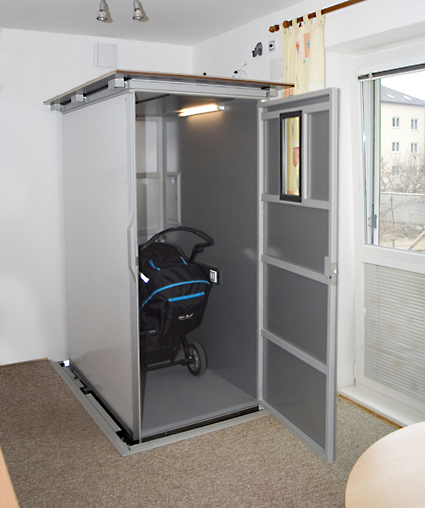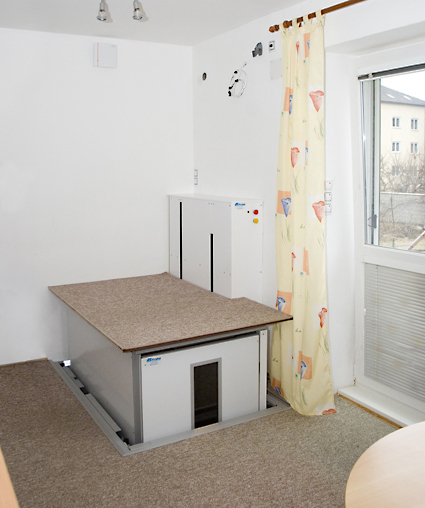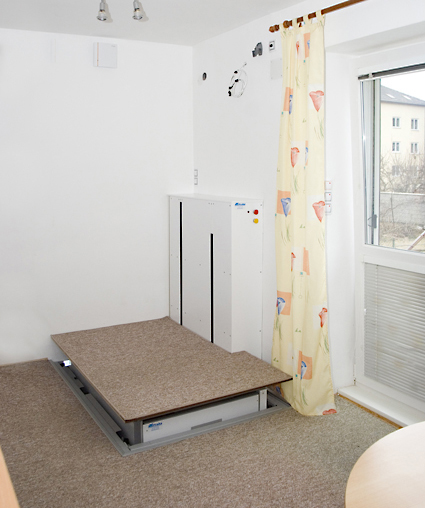








Atypical house lifts
Comparison of domestic lift and standard lift
Advantages
From the point of view of legislation, the domestic lift is not a dedicated lifting device, it is machinery.
This means easier installation, inspection, service, maintenance, etc.
It also has another positive effect: lower price.
Disadvantages
Smaller running speed - max 0.15m/s
This is why home elevators are mainly used for less than 12m elevation and less expected usage frequency.
Domestic lift
The device is based on a passenger transport platform. It is suitable for any building prepared for a lift, for stairwells where it is technically possible to have a hole in the ceiling, or outside the building. It is desirable to prepare basic requirements at the time of designing the project, which in the future would result in unnecessary increased costs.
The dimensions of the shaft are based on the booth size. Empty space needed under booth is typically 120 mm and can be reduced, if necessary.
Load capacity of 250kg / m² cabin area, normally from 315 to 400kg.
The drive is powered by a hydraulic unit or an electric motor, in both cases there is sufficient single-phase power supply, 230V / 1.5kW.
In addition to the directional and STOP pushbuttons, a two-way emergency communication device is fitted in the cabin and can be fitted with a folding seat on request.

















